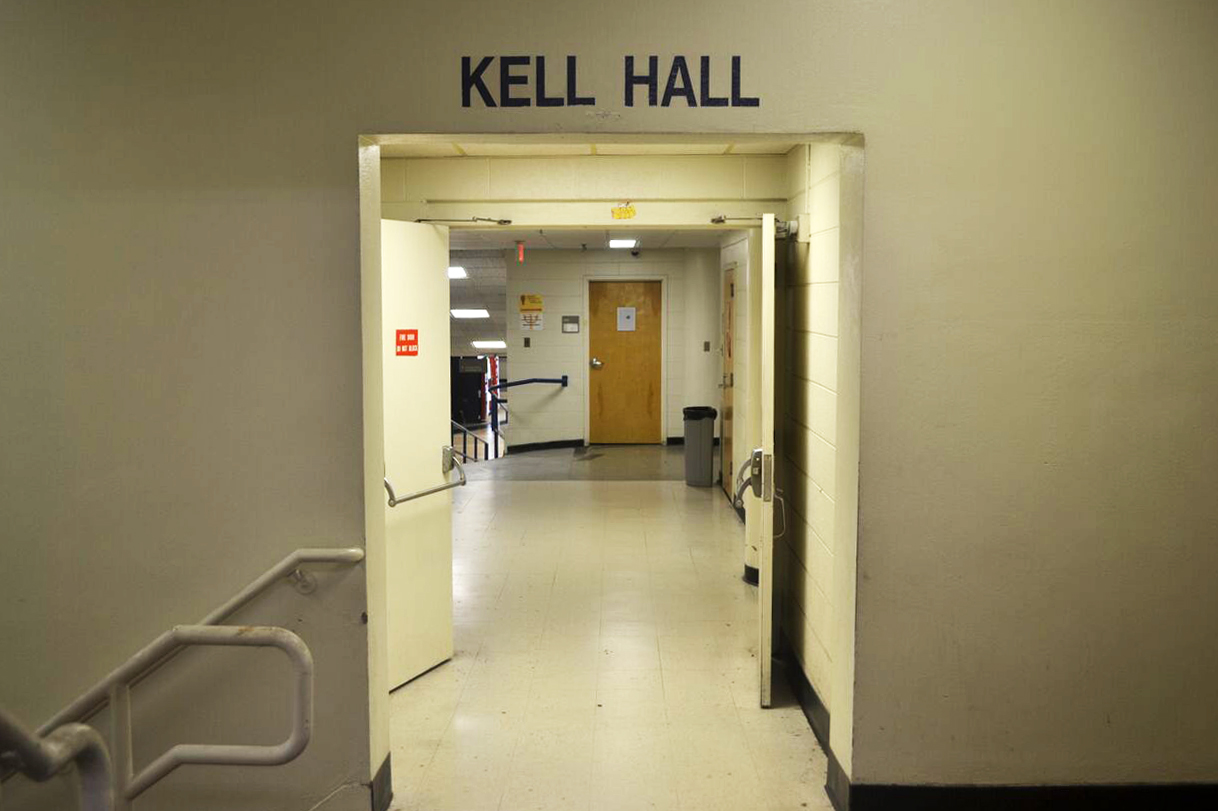
THE PLAN
Kell Hall is set to be torn down as a part of Georgia State’s master plan. Kell will soon become a green space called the “Greenway,” part of a redesigning effort of the courtyard in front of Library North. The Signal has recently reported on the process of approval by Mark Becker in October 2013 and the University System of Georgia Board of Regents.
The Signal also previously reported that Russell Seagren, Director of Facilities Planning, said the “entire project is estimated to cost the university $20 million.”
According to The Signal report, Seagren said the school is planning to “demolish Kell Hall and fix the utilities connecting Kell to the Arts and Humanities building and Langdale Hall,” and that the next phases of the plan would be to remodel “the front of Library North, remodel the outside of Langdale Hall, and add the additions to Arts and Humanities and Sparks Hall.”
The entire geosciences department is set to be relocated to Sparks Hall. Professor Lanier Henson said he doesn’t know who will be in charge of moving the closets, including closets of rock specimens and the giant slabs of granite that call Kell home, but it “sure won’t be [him].”
Kell is home to the geosciences department with their enormous collection of specimens and experimental equipment. Henson said that even if they do relocate all the collections, someone would still be in charge of reorganizing and recatologing all the rock and fossil samples which is “going to be a lot of work.”
Student Tina Ellis thinks the green space will be very beneficial to the student body, and would finally give Georgia State students a nice place to sit and relax that isn’t all concrete. Ellis said while the campus does have Hurt Park and Woodruff Park, they are “totally underutilized.”
Ellis can’t image a green space going there because it’s, “such a small area” but she is excited to be able to have somewhere to sit and get some sun.
THE HISTORY
Kell is a unique building originally constructed from an old parking garage in 1964. The Ivy Street Garage, as it was named, was the first parking garage in Atlanta. The school was expanding and the director at the time, George M. Sparks, decided that the parking garage would give a large amount of room and could quickly be acquired and converted to a school building, seeing as they didn’t have the space or the money to build an entire new one. This new building was called the “Ivy Street Garage” or the “Bolling-Jones Building” before it was dedicated as Wayne Kell Science Hall in 1964.
Sparks liked the ramp ways because he felt it would be needed for all the disabled veterans returning from World War II and entering university due to the newly passed GI bill.
According to a Georgia State magazine from 2010, “Sparks leased out parts of Kell Hall in the early days. He set up a sawmill on the fourth floor just after World War II, when lumber was in high demand and north Georgia had plenty of it. Other tenants included Southern Bell Telephone Co., Franklin Tire Co., the Board of Regents, and the teachers’ retirement system. The Atlanta Symphony Orchestra rehearsed on the sixth floor at one point.”
It also stated that “in the days before animal research protocols, lab turtles had free reign over the science laboratory in Kell Hall.”
WE LOVE TO HATE IT
Kell is recognizable with its winding halls which lack stairs but instead boast ramps that go around and around, confusing students.
Ellis said she has never actually had a class in Kell but uses it as a “cut through.”
“I always without fail get lost. I can’t find my way out ever. It winds around with ramps and everything looks the same with white walls and fluorescent lights. It’s a maze in there,” said Ellis.
Some professors, like Lanier Henson, find the layout charming as Henson recounts that he’d “miss more than anything” his “office overlooking the street down Hurt Plaza.” but that he still struggles with the layout as well.
“It will be nice having a building for the department where the rooms are numbered in a typical pattern. The first week of each semester I tend to give 20 people directions who are aimlessly walking the halls lost. Half the time they think they are in Art and Humanities or Sparks still and not sure how they got there,” Henson said.
THE CONTROVERSY
Because Kell Hall is such an old building, there has been a rumor moving throughout the geosciences department regarding its radioactivity.
Graduate student and teaching assistant Nicole Vermillion said the radioactivity could be due to past building materials.
“From what I’ve been told, Kell Hall is the most radioactive building on campus. It’s nothing to be alarmed by; lots of materials are radioactive. The materials used to construct the building are most likely radioactive. Some natural materials, like granite, contain radioisotopes in the minerals. So, if granite from Stone Mountain was used in any of the building materials, then there will be some radioactive decay of uranium,” Vermillion said.
A Georgia State geology professor who wished to remain anonymous speculates that the radioactivity isn’t from the building materials, but instead the “geology department’s massive collection of rocks and minerals” and “some specimens happen to be radioactive.” But he insisted that it is no cause for alarm.
When The Signal reached out to Radiation Safety Officer Quintena Tinson for a comment, she declined to respond as she feared it would create mass panic in the community.
